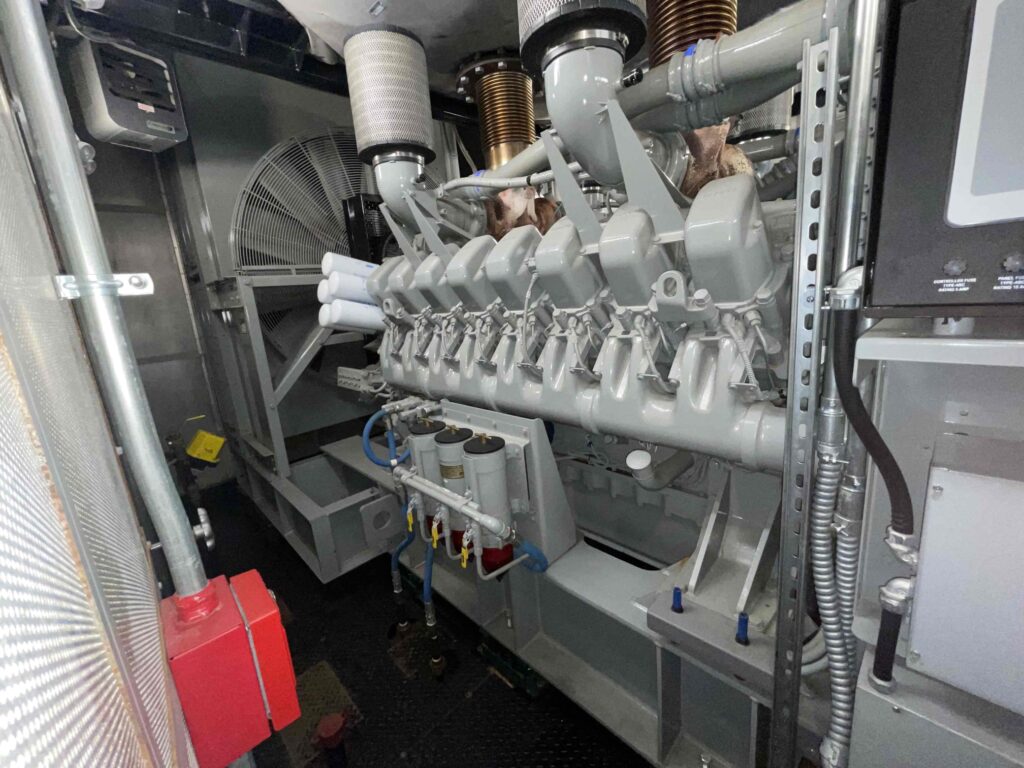Understanding the 3 Generator Ratings: Authority in Power -Prime, Standby, and Continuous

When choosing the right generator for your business, it’s crucial to understand the different types of power generator ratings—Prime Power, Standby, and Continuous. Each generator rating is designed for specific applications, and knowing the differences ensures you select the right unit for your needs, whether it’s for emergency backup, peak shaving, continuous operation, or occasional power use.
Table of Contents
Standby Generator Rating
Standby generators are what most businesses think of when they imagine backup power. These units are designed to provide emergency power when the main electrical grid fails. Standby generators are not designed for continuous use but rather to kick in during unexpected outages.
- Use Case: Backup power for commercial buildings, hospitals, data centers, etc.
- Operating Time: Short-term use, typically for emergency situations only.
- Fixed Load: These generators usually supply power to a fixed load and are designed to run only when the utility power fails.
- Maintenance Schedule: Since standby generators often sit idle for long periods, regular testing and maintenance are essential to ensure they’re ready when needed.
Standby generators typically come online automatically when the utility power fails, providing critical power to keep operations running smoothly during outages. However, they are only meant for occasional use and should not be relied upon for daily power needs.

Prime Power Generator Rating
A generator with a Prime Power rating is designed for use as the main source of power when no utility grid is available. These units are meant to operate for extended periods, typically in applications like remote construction sites, mining operations, isolated facilities that need a consistent energy source or a customer that does Peak Shaving (Load Shedding).
- Use Case: Remote locations without access to grid power or peak shaving (load shedding)
- Operating Time: Can operate for long periods, but should not run at full capacity 24/7.
- Variable Loads: These generators are capable of handling varying loads over extended periods.
- Maintenance Schedule: Regular maintenance is essential, especially since these generators may run for weeks or months at a time.
Prime Power generators are built to withstand heavy-duty usage, but they are rated for varying power output, depending on the needs of the load at any given time. This rating typically includes a specified limit on the number of operating hours per year.

Continuous Generator Rating
A generator with a Continuous Power rating is designed to run at full capacity without interruption, making them ideal for applications that require consistent, non-stop power. Continuous power generators are commonly used in industrial plants, power stations, and large data centers where downtime is not an option.
- Use Case: Locations where power is required continuously and without variation.
- Operating Time: 24/7 operation, without any expected interruptions.
- Fixed Load: Unlike prime power, continuous power generators supply a steady load without variation.
- Maintenance Schedule: Due to the non-stop operation, frequent maintenance is necessary to avoid breakdowns.
Continuous generators are similar to Prime Power generators but are designed for a more stable and unchanging load. They’re typically used in power stations or in environments where the power demand is predictable and constant over time.

Key Differences at a Glance
| Rating | Prime Power | Standby | Continuous |
| Purpose | Main source of power in off-grid locations or Peak Shaving | Backup power during outages | Constant, steady power 24/7 |
| Operating Time | Long periods but not 24/7 at full load | Occasional use during emergencies | Continuous operation at full load |
| Load Handling | Varies depending on needs | Fixed load during outages | Fixed, steady load |
| Application | Remote sites, construction, mining | Hospitals, data centers, commercial | Industrial plants, large-scale operations |
| Maintenance | Frequent, due to extended use | Regular testing, but less frequent use | Frequent, due to non-stop operation |

Which Rating is Right for You?
Choosing the correct generator rating is essential to meet your power needs efficiently and cost-effectively. Whether you’re powering a remote site, preparing for outages, or keeping a facility running non-stop, understanding these ratings helps ensure you’re investing in the right solution for your operation.
If you’re unsure which type of generator best suits your application, contact us for expert guidance and a range of options from top manufacturers to meet your specific power requirements. Weld Power Generator offers easy turnkey solutions for new equipment purchases.
